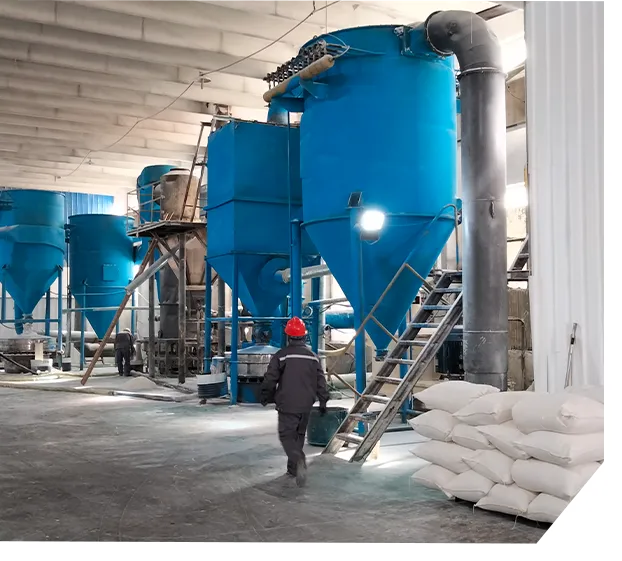The Intersection of Paint and HPMC A Modern Approach to Coatings
In the world of coatings and paints, innovation is the cornerstone of success. As industries evolve, so do the materials that contribute to their development. Two crucial components in the formulation of modern paint products are paint formulations and Hydroxypropyl Methylcellulose (HPMC). HPMC, a versatile and widely used polymer, has proven to be invaluable in enhancing the performance of various coatings. This article delves into the significance of HPMC in paint formulations, examining its properties, benefits, and applications.
Understanding HPMC
Hydroxypropyl Methylcellulose is a non-ionic, water-soluble polymer derived from cellulose. Its structure, which incorporates hydroxypropyl and methoxy groups, allows it to demonstrate unique properties that make it suitable for various applications, particularly in the paint and coatings industry. HPMC is known for its thickening, emulsifying, and film-forming capabilities, making it a multifunctional additive.
Role of HPMC in Paint Formulation
1. Thickening Agent One of the primary roles of HPMC in paint formulations is to serve as a thickening agent. Paints often require a specific viscosity to ensure proper application and stability. HPMC provides the necessary viscosity without compromising the flow properties of the paint. This allows for smooth application and prevents issues like sagging or dripping during the painting process.
2. Improved Open Time HPMC increases the open time of paint, which refers to the time the paint remains workable after application. This feature is particularly beneficial for artists and professionals who require extended periods to perfect their work. The increased open time allows for blending and feathering, which are essential techniques in various painting styles.
3. Enhanced Adhesion In the realm of coatings, adhesion is paramount. HPMC enhances the adhesion properties of paints, ensuring that they bond effectively to a variety of surfaces, including wood, metal, and concrete. This improved adhesion minimizes the risk of peeling and flaking, leading to longer-lasting finishes.
4. Film Formation HPMC contributes to the film-forming ability of paints. Once the water evaporates from the applied paint, HPMC helps in the formation of a stable and durable film. This film not only provides a protective barrier against environmental factors but also enhances the overall aesthetic appeal of the coating.
paint hpmc

Benefits of Using HPMC in Paints
The incorporation of HPMC in paint formulations comes with several advantages
- Eco-Friendly HPMC is derived from natural cellulose and is generally considered safe for the environment. Its use aligns with the growing demand for sustainable and eco-friendly products in the coatings industry.
- Versatility HPMC is compatible with a wide range of paint systems, including water-based and solvent-based paints. Its versatility makes it a valuable addition to various formulations, catering to diverse client needs.
- Cost-Effectiveness While HPMC enhances the performance of paints, it also offers a cost-effective solution for manufacturers. The improvements in adhesion, viscosity, and stability lead to reduced wastage and improved efficiency during the production process.
Applications of HPMC in Coatings
HPMC finds applications not only in decorative paints but also in industrial coatings, adhesives, and sealants. In architectural coatings, HPMC contributes to the application and durability of exterior and interior paints, ensuring a long-lasting finish. Additionally, in the automotive industry, HPMC is used in the formulation of protective coatings that require specific texture and durability.
Conclusion
In summary, the synergy between paint formulations and Hydroxypropyl Methylcellulose (HPMC) is transforming the coatings industry. HPMC enhances the performance, application, and durability of paints, making it an essential ingredient in modern formulations. As manufacturers continue to seek innovative and sustainable solutions, HPMC stands out as a versatile and effective additive. Its role in improving paint quality not only meets the needs of professional painters and artists but also aligns with the industry's shift towards more environmentally responsible practices. As we look to the future, the collaboration between innovative materials like HPMC and paint technology will undoubtedly yield exciting advancements.
-
Rdp that The Revolutionary Polymer Powder Transforming Modern Construction MaterialsNewsAug.11,2025
-
Hpmc Powder that Versatile Additive for Detergents and Personal CareNewsAug.11,2025
-
Hpmc Hydroxypropyl Methylcellulose that Essential Building Material Additive from Shijiazhuang Gaocheng YongfengNewsAug.11,2025
-
Hydroxypropyl Methyl Cellulos Hpmc that Essential for Construction ApplicationsNewsAug.11,2025
-
Mhec Powder that Revolutionizing Construction Chemistry with Cellulose Ether SolutionsNewsAug.11,2025
-
Industri Hpmc that The Global Backbone of Advanced ConstructionNewsAug.11,2025




